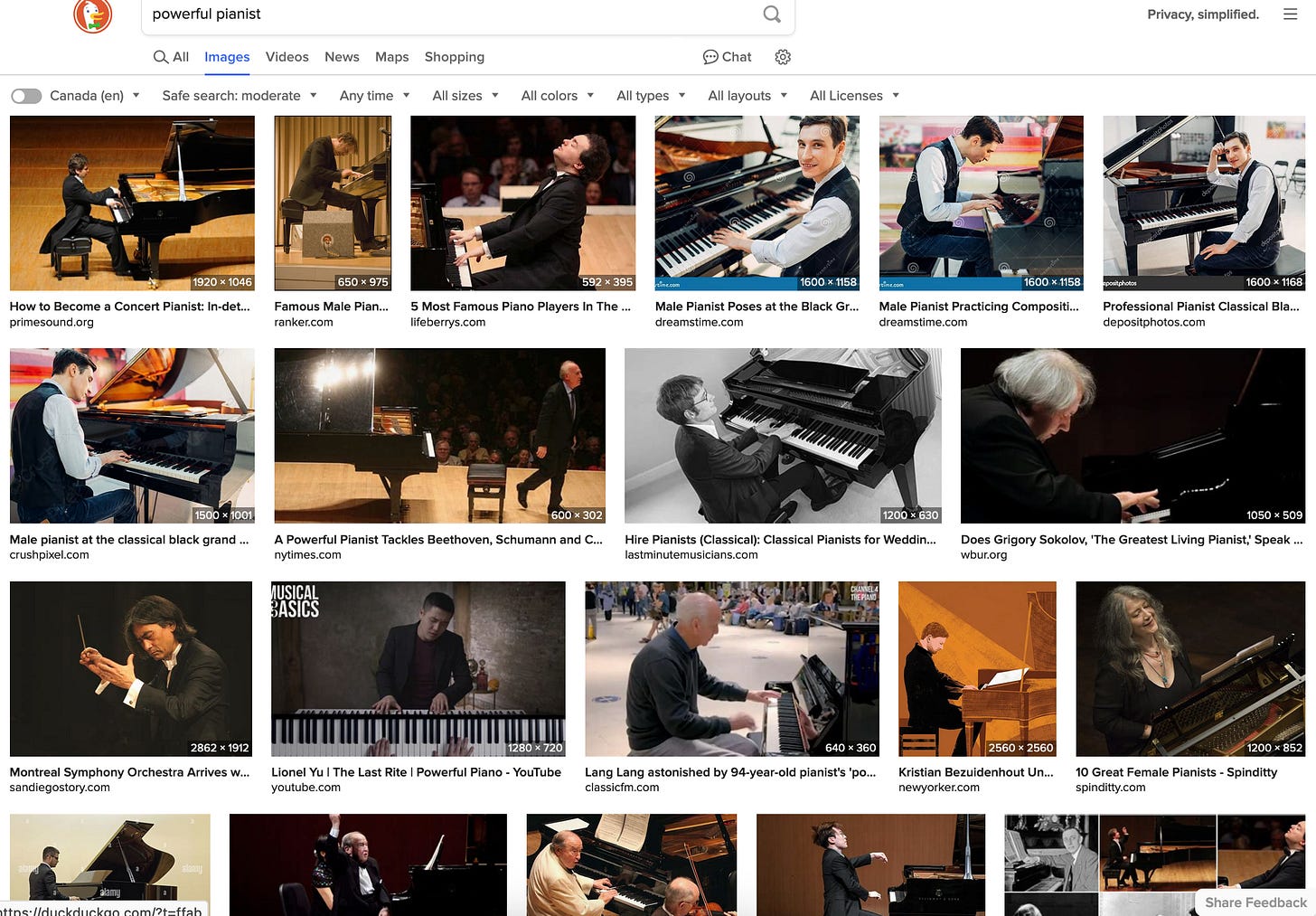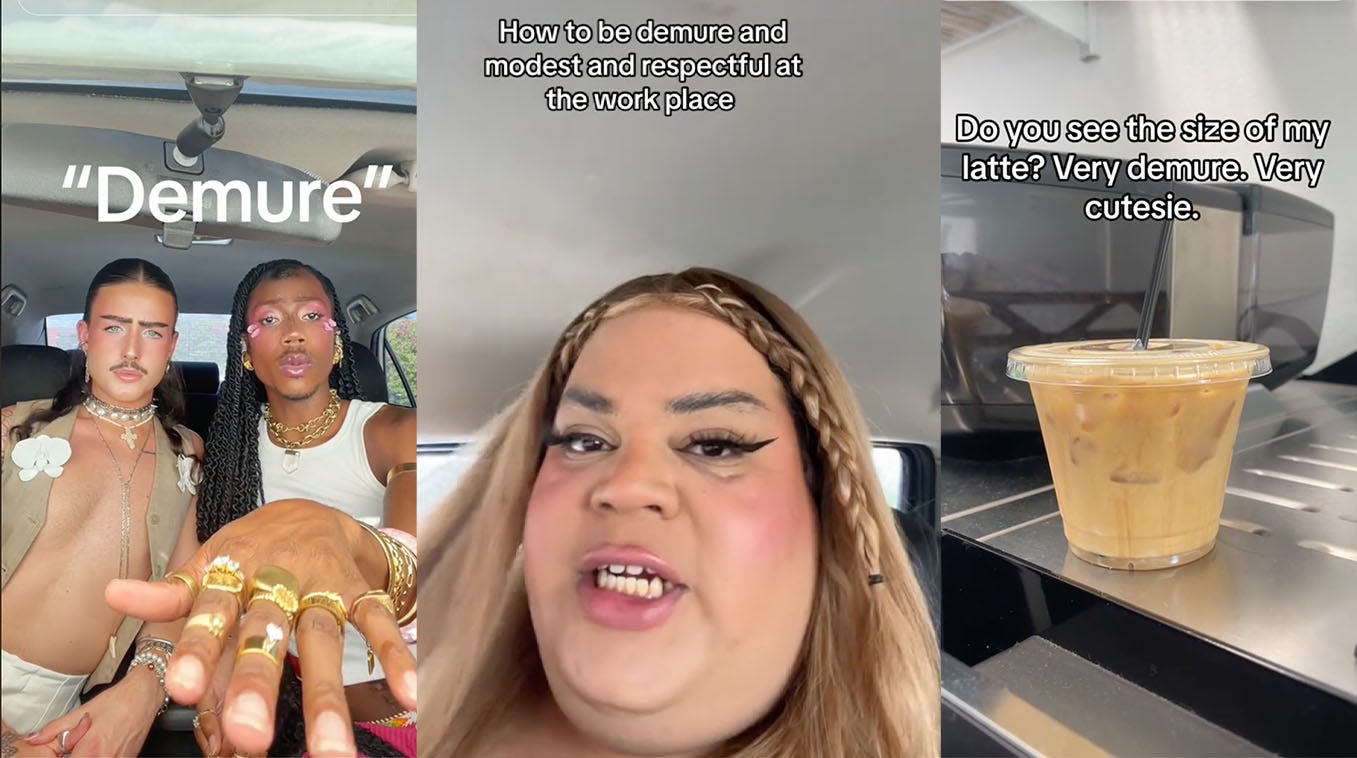Week 46: Of Beethoven Pianists and Cabbages and Kings
One pianist's journey to perform the 32 piano sonatas of Beethoven.
About a year ago, I had my “colours” done. This is something that people (mostly women) do to help with their wardrobe choices. Not being the type of person who would pay several hundred dollars to sit still for an hour under bright lights while someone held up various coloured silks to my face, it never would have been my idea. However, I have a dear friend from high school who is an expert colourist. I ran into her at a party; she spoke with insight and intelligence on colour perception; and then she convinced me to act as her model one day while she trained another colourist.
It turns out that my skin undertones happen to be of a relatively rare type described as “Soft Autumn”. So, in this next stage of my life, where I move on from learning the 32 Beethoven piano sonata to performing them in public, I am advised that my best onstage colours are this palette:
First problem: If I follow this dictum, will I be flouting the traditional advice for women pianists to wear either bright red or black? At least now I have good reason to know why I was never comfortable with it. I googled “female concert pianist” to find out what’s up these days:
Yep, still The Red and the Black. For comparison, here’s the result for simply Googling “concert pianist”. You can see why I didn’t bother Googling that for colour advice:
But what about Beethoven sonata pianists? I googled that:
Hmm. Well, let’s try “female Beethoven sonata pianists”:
Again with the red dresses – but what’s more interesting is how their actual album content is not coming up – instead, it’s their visual image.
Last night, checking The Atlantic for US election coverage, an essay from 2018 was suggested to me by their algorithm, titled “What It Takes To Be A Trial Lawyer If You’re Not A Man”, by the lawyer Lara Bazelton.
I’m pretty sure this suggestion is connected with the lawyer Kamala Harris running for president. I read it, and was fascinated to learn how much of a female lawyer’s workplace conditions have to do with dress – especially high heels and their associated job hazards. I cannot wear high heels for the simple reason that my legs wouldn’t fit under the keyboard, so I can relate.
Bazelton asserts that the standard dress for male trial lawyer – dark suit, simple long tie, flat shoes, closely cropped hair – is not only comfortable and functional, but crucially, INVISIBLE. Their appearance is not remarked on and the focus is elsewhere.
Women trial lawyers, by contrast, are VISIBLE and assessed by their appearance, and Bazelton gives many examples from her life.
Speaking of shoes, female pianists have responded to their high visibility with a full spectrum of approaches, from towering heels (Yuja Wang) to bare feet (Alice Sara Ott). The inevitable visibility of their choices is illustrated in the following headlines:
For female lawyers, high heels are the requisite uniform. Also requisite for them: skirts that are not too short or long, hair colouring, and makeup. I assume that nails must also be well polished. Kamala Harris, by the way: check, check, check, check , and check. Here’s a pic of one of her skirts:
It’s not impossible for a pianist to employ advanced technique in such a skirt, but it’s very, very difficult for most of us.
Beethoven interpreters have in common with trial lawyers that they must address cultural assumptions about power.
According to Bazelton, women lawyers, in order to present as powerful, must simultaneously present as pleasant, kind, moderate, and never angry (Kamala: check).
Beethoven is best known as a powerful, masterful musician. Here’s an interesting search:
Since the knowledge that Beethoven regarded women highly as his best piano interpreters has become lost in time (see Weeks 18, 21, and 22), one might assume there aren’t many women succeeding with Beethoven sonatas these days. How many of us are there, anyway – how many women pianists perform all 32 sonatas?
I am developing a database of Beethoven cycle pianists. This next year, I hope to interview some of them for this blog. Throughout history, starting with Beethoven himself, so far I count 121 pianists known to have performed or recorded the complete cycle, of which 73 are living. Of these, 23 are women, 11 of them living. That’s an average of about 20% women (lower than the average of 25% female trial lawyers in the USA in 2017).
I can find four pianists presenting the complete cycle in the 2024-25 season: Jeffrey Swann, Boris Giltburg, Fabian Müller, and myself. That lineup doesn’t offer me much fashion colour guidance, so my search for how to dress for a Beethoven tour continues.
There are many women playing several Beethoven sonatas, or who have played the cycle in past years, some of them celebrities. Taking a look at these, I see that while they are often unafraid to present a flashy, colourful image generally, they are more subdued in their marketing of Beethoven performances. Like trial lawyers, they seem to be moderating their PR image to counteract the effect of a woman playing “powerful, masterful” music. Here are two examples of general PR, contrasted with Beethoven PR.
Yuja Wang:
Valentina Lisitsa:
Lots of people know about the flash and flair of celebrity women pianists these days, but there’s a subset of women pianists who centre their careers on Beethoven, and they present quite a different image. Here are three examples.
Meanwhile, Angela Hewitt, a Beethoven cycle pianist, has found her own balance by wearing conservative dresses with these red shoes:
Does Kamala Harris wear red? Of course, she has the imperative not to look Republican. But even in “red” environments, she leans away from wearing it.
Luckily, Gen Z is finding some cheeky ways to counteract cultural assumptions, by deploying the “Very Demure, Very Mindful” memes circulating this summer.
That is very “Soft Autumn”! So maybe it will be on trend after all? Stay tuned!




















